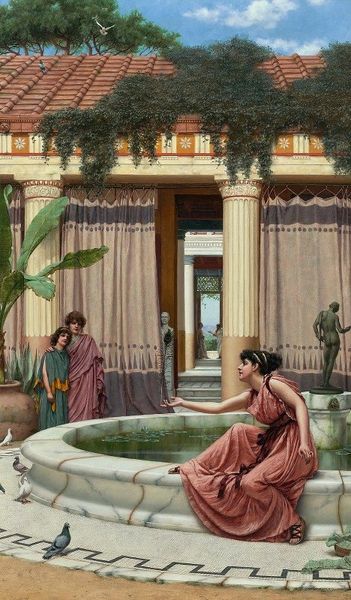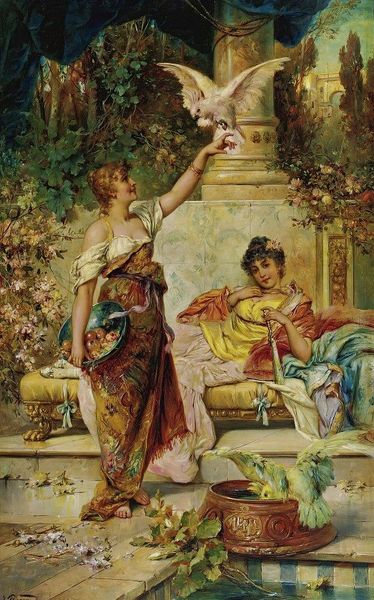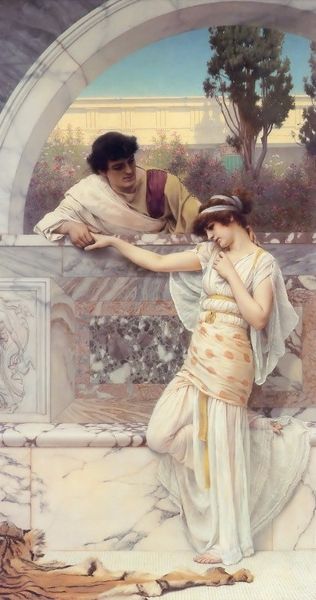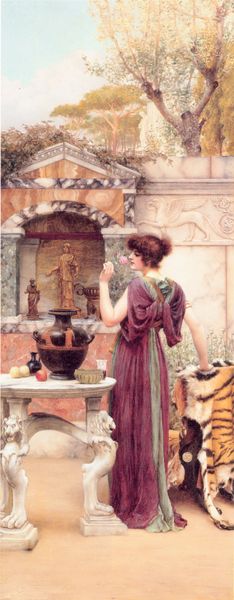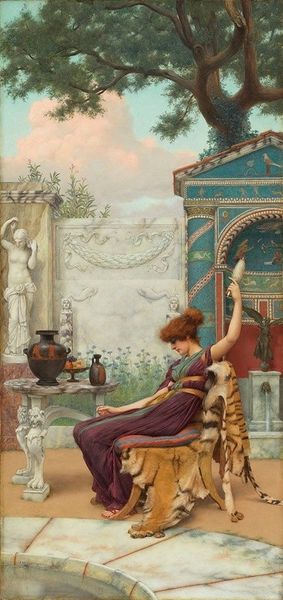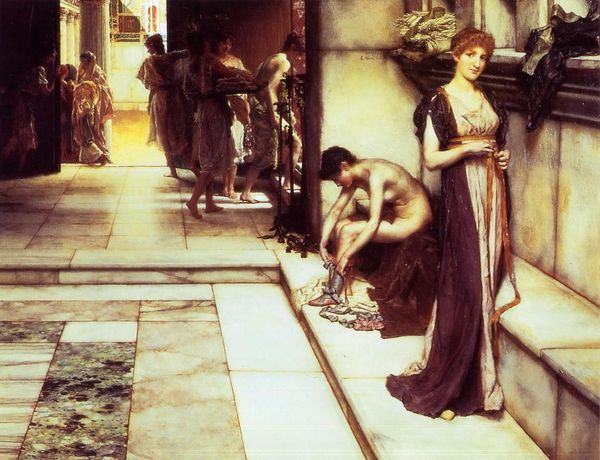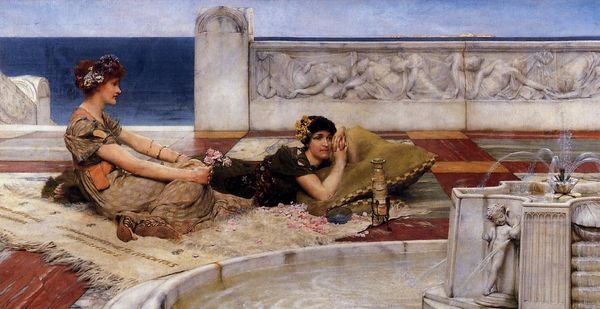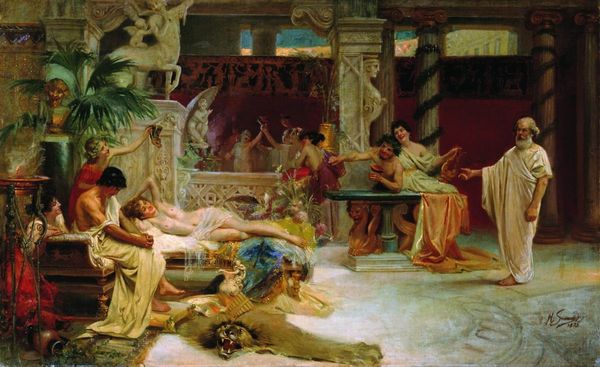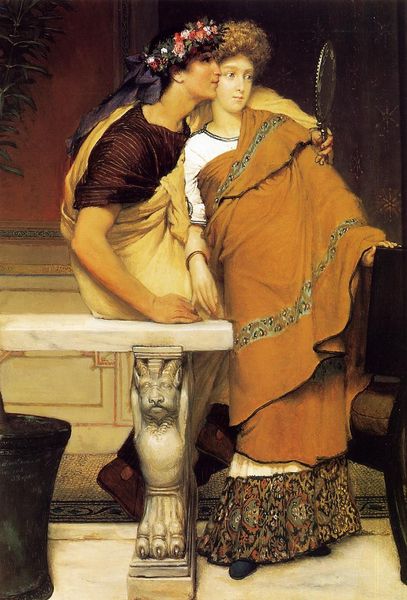
Copyright: Public domain
Curator: Lawrence Alma-Tadema painted this evocative scene, "Between Venus and Bacchus," in 1882. You can find it at the Walters Art Museum in Baltimore. What are your first thoughts? Editor: Well, right away, the crisp light and detailed rendering give me a sense of intense labor, a careful process… the way the marble appears almost tactile. There's an impressive amount of material realism at play here. Curator: Absolutely. Tadema was meticulous in his historical research and portrayal. This work reflects a broader cultural fascination of the era, a revival of interest in classical antiquity during the late 19th century, when the art world had become a public commodity. Editor: I'm curious about that statue—is it marble, or is it simply the way the paint conveys stone-like qualities? The texture is remarkable, almost mimicking how marble is consumed – the smooth, almost sensual feel. What processes are really involved in creating this marble-like visual effect using oil paints? Curator: It's rendered in oil paint. Alma-Tadema used layers of glazing to create that effect, and this painting style also points to academic art and orientalism. Consider the choice of Venus and Bacchus, figures deeply rooted in mythology, as potent symbols in society. Their interplay here likely had some intended message for his Victorian audience. Editor: I see your point. And yet, what sort of workshop process went into this level of refined technique? What were the stages of creation—preliminary sketches, underpainting, the grinding of pigments—all contributing to a visual object consumed and commodified by a very specific bourgeois viewership? Curator: Certainly, the labor of artistic production is important, and yet there is the politics of imagery. For instance, Alma-Tadema exhibited his works regularly at venues such as the Royal Academy. And consider the art criticism that either promoted or rejected such academic work! Editor: True, we often separate that social and historical positioning from the artistic work. Considering the materials and labor alongside that positioning certainly provides a more full, material understanding. Curator: Ultimately, viewing Alma-Tadema through a historical lens helps to understand not just the image but its impact on the viewing public of the time. Editor: And for me, looking closely at that intersection of the raw material of paint, alongside his technical craft, makes me appreciate even more its value as an intricate artifact from the late 19th century.
Comments
No comments
Be the first to comment and join the conversation on the ultimate creative platform.
